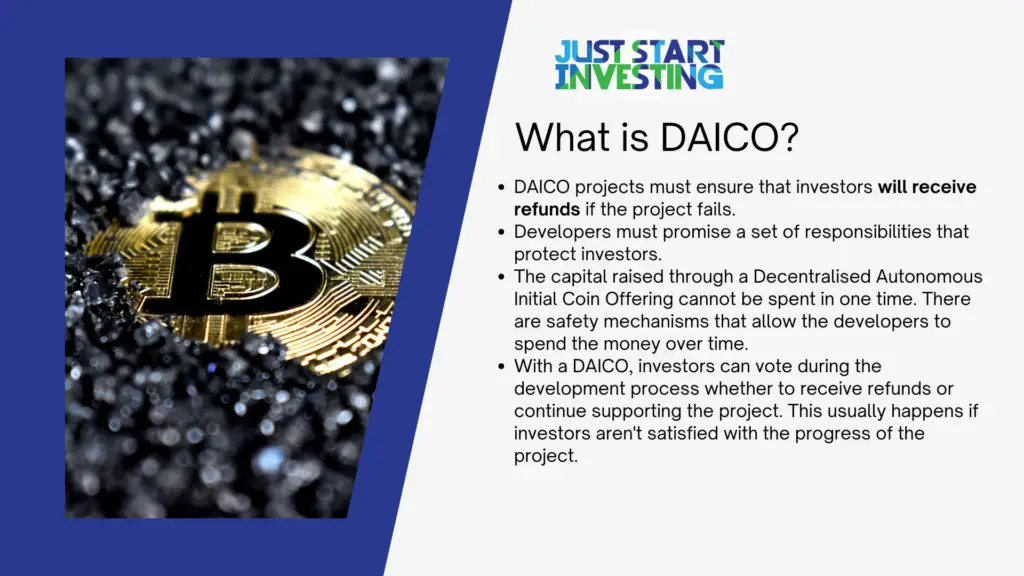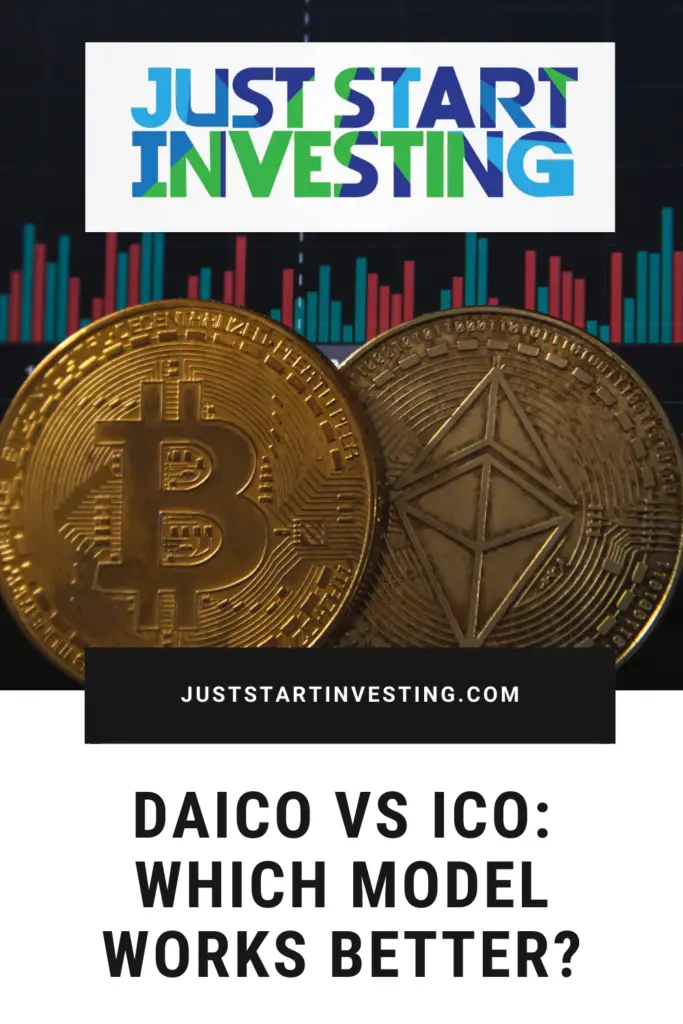In the world of cryptocurrencies, terms such as DAICO and ICO aren’t that uncommon. While these terms are inherently tied to crypto, they follow a traditional fundraising model. As such, by the end of this guide, you’ll see that both DAICO and ICO are fundraising models that share similarities with the traditional means of fundraising.
So first up, let’s see what DAICO is.
What is DAICO?
DAICO stands for Decentralized Autonomous Initial Coin Offering. While it might come to you as a surprise that DAICO is a word that derives from two terms – DAO and ICO. These terms are familiar to the avid cryptocurrency investor. But the term DAICO is relatively new. What you all need to know is that DAICO is a decentralized model for capital investment.
The idea behind DAICO comes from one of the founders of Ethereum – Vitalik Buterin. He proposed the idea a year ago as a means to protect investors when investing in ICOs. So DAICO can be seen as a better version of the ICO model. There are a few things that DAICO promises to investors. Unlike an Initial Coin Offering, the model puts strict rules that protect investors from shady crypto startups that seek investments only to pull the rug afterward.
So, let’s see what those rules are.
- DAICO projects must ensure that investors will receive refunds if the project fails.
- Developers must promise a set of responsibilities that protect investors.
- The capital raised through a Decentralised Autonomous Initial Coin Offering cannot be spent in one time. There are safety mechanisms that allow the developers to spend the money over time.
- With a DAICO, investors can vote during the development process whether to receive refunds or continue supporting the project. This usually happens if investors aren’t satisfied with the progress of the project.
These are some of the core rules and principles of a DAICO project. Over time, we’re seeing that the ICO model might not suit investors as much as they’d like. So from an ICO, the crypto space is gradually evolving. First, we had IDOS crypto, and now we have DAO and DAICO. All of these models are different and look to improve on the Initial Coin Offering.

What Is ICO?
An ICO or Initial Coin Offering is the very first fundraising model for the crypto industry. As mentioned previously, an ICO is the same as an IPO. The only difference is that with an ICO, companies distribute tokens instead of shares.
So, here are the core rules of an ICO.
- ICOs are like stocks on the blockchain. Some ICOs have utility, while many don’t. The lack of utility for software or service can be a red flag that the project isn’t great.
- ICOs are unregulated. While not every ICO is a scam, investors have no way of knowing if a project is a scam or not.
- ICOs are a way for startups to offer services and or products to investors. These services and products are related to cryptocurrencies and the blockchain as a whole.
An ICO isn’t the perfect fundraising model since investors have no way of knowing that the project will be a success. It is unregulated, and investors are generally unprotected. But that doesn’t mean ICOs aren’t widely successful in the crypto space. To this day, the most successful ICO has been the EOS ICO. According to Ico Bench, the EOS public ICO raised over $4 billion.
EOS is also one of the most successful crypto projects, with the developers building the infrastructure to support other blockchain projects. So an ICO can be a good thing. But the lack of investor security and an alarming rate of scams ruin its reputation. That’s what the DAICO, IDOS, and DEX models hope to eliminate. With various “proof” mechanisms, these models achieve what ICO cannot.
But since this guide is about DAICO vs ICO, let’s look at these two and compare them.
DAICO vs ICO – Which Is the Better Fundraising Model?
The need for a superior fundraising model is something that the industry needs. If we take into account that 80% of all ICO projects are scams, then we can safely assume that investor trust is at an all-time low with ICO projects. In short, ICOs are a great way for companies to raise capital. But they’re a terrible way for investors to invest in these companies.
There is no shortage of high-profile exit scams involving prominent ICO projects. If a shady project lives on hype, then it’s easy to pull the rug. But if there is a fundraising model that ensures investors are protected, then scams won’t be launching through this model. That’s the idea behind DAICO. As the industry spreads into multiple fields, such as play to earn video games, the metaverse, and DeFi (Decentralised Finance), the need for DAICO to be the standard method of fundraising becomes a necessity.
So to answer the DAICO vs ICO debate, here are a few talking points you should remember.
- DAICO is an ICO but with a decentralized and autonomous twist to it. What this means is that DAICO addresses the core problem of an ICO project.
- DAICO crypto projects also reward investors with tokens. Only this time, investors can vote on whether they want their investment back or continue supporting the project.
- With DAICO, investors are protected from exit scams since developers cannot use all the invested capital at once. They can do it gradually over time. That isn’t the case with an ICO, hence why exit scams are so common.
- DAICO is still an ICO, so investors should be wary when investing. Simply saying that you’re investing in a DAICO crypto project doesn’t mean your funds are safe.
Conclusion
Now that you know what DAICO and ICO mean, you can make a sound decision as to what type of project you want to invest in. As mentioned previously, DAICO doesn’t guarantee your funds are secure 100%. The first-ever DAICO fundraising project raised $15 million. More than 4,800 investors participated in the fundraiser, with both developers and investors coming out satisfied with their returns.
DAICO does address many of the core issues surrounding ICO crypto investing, and we’re only going to see more of it.

Partner at Vega Capital Management - a private funds management company.
An experienced portfolio manager with 10+ years of proven and reputable track record in investment management and financial analysis. Currently, a partner at one of the fastest-growing private fund management companies in southeast Europe, Kiril has been tending to a loyal international base of client-investors and partners. When he is not crunching numbers and increasing his client’s wealth, he reminisces about his Michelin-star restaurant cheffing years and fondness of the culinary arts.

